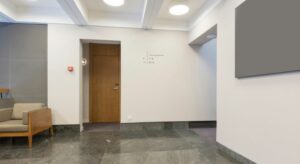A carpeted floor, in a room is basically a bare floor trying to reach the pinnacle of art and aesthetics within those four walls by studying full, lush, cozy and enclosed till the bounding walls.
Carpets have been extensively used as a means to minimise noise pollution in public buildings including offices and hospitals, but mostly in residential places, they have been used only for the enhancement of aesthetics.
But it has been found out through extensive research that carpets are a major source of in-house pollution and adversely affect the air quality within.
For starters, a dusty carpet is actually an abode to a lot of dirt and particulates and a host of other pathogens and allergens. But a surprising fact is that carpeting on itself causes the deterioration of indoor air quality.
During the late 80s and early 90s, carpeting was a booming trend; becoming the most commonly used flooring material in offices, houses, schools, kindergartens and etc.But it was not much later that they were being reported against as a major causative agent behind the deterioration of indoor air quality as also posing dire consequences to patients suffering from various allergies and respiratory disorders.
The detrimental effects on the indoor ambiance by carpeting can be summarized in terms of a two-pronged action.
The first factor is that carpets act as a cache or reservoir to various minuscule things like dirt, dust, other particulates, allergens and even materials originating from biological contamination. These pollutants continue to get stored inside the carpet and are processed gradually and finally released in the air. It is hard to draw a direct correlation between health adversities like asthma (respiratory diseases) and various forms of allergy with the re-suspension of the pollutants in the atmosphere, without knowing the extent to which the pollutants pose threat and whether their exposure levels are significantly high enough to cause health hazards.
The second factor is that carpets produce emissions. They emit different volatile organic compounds (VOCs) that have their peculiar odor and are capable of causing irritation of mucous membranes particularly in sensitive individuals. Pollution spreading indoors over a longer span indicates that the carpet becomes repository and facilitates in the deposition of dirt which later becomes airborne during normal indoor activity and might be associated with adverse health impacts.
There have been experiments carried out which have indicated that the pollution creating capacity of carpets is more in comparison to normal floors without carpeting. Carpeted floors in schools and homes were found to contain more dust, protein and allergens in comparison to smooth uncarpeted floors. The dust recovered from carpets was found to have mite allergen concentrations to the order of 6-14 times higher than the one recovered from normal uncarpeted floors, be it smooth or hard. Carpeted floors were found to hold more amount of antigens too, compared to the non-carpeted floors. Levels of several antigens were found to be statistically higher on carpet, compared to hard surfaced flooring.
For dog and cat allergens, this difference was also found to be very clinically significant as the mean levels of allergen concentration on hard floors were well below the proposed threshold limit for allergic sensitization.
Installation of carpets also caused increased exposure to allergens from house dust mites whereas removal of carpets was associated with the significant reduction of the levels of both mite allergens and ergosterol, the component that acts as a building material for the cell wall of molds. Carpets have also been linked with higher re-suspension rate of airborne particles compared to different materials like PVC, Vinyl and wooden materials which also form different furnishing items within an indoor environment and also have higher rates of re-suspension than linoleum finishing at the same humidity level.
Personnel in schools with floor to floor carpeting reported that there was an increased prevalence of eye and airway/respiratory symptoms, face rashes, headaches and abnormal tiredness compared with those in schools with hard and non-carpeted floors. Removal of the carpets from those places caused several symptoms to decrease and hence a lot of conclusions could be drawn. Another study conducted in a particular group of schools showed that the fraction of particulates with aerodynamic diameter less than 2.5 micrometers and the particulates with aerodynamic diameter between 3.0 to 10.0 micrometers was significantly higher for classrooms with carpeted floors compared to classrooms without carpeting. Similar results were found regarding bacterial spores and pathogenic microorganisms and it was also found that treading over carpeted floors generate significantly more swirling and re-aerosolization of such microorganisms than non-carpeted hard floors or even PVC floors.
It has been experimentally verified that particle re-suspension rate is dependent on some factors like particle size, the hydrophilic properties of particles and relative humidity. Thus re-suspension of hydrophilic and not hydrophobic particles, decreased, when relative humidity was increased, and this decrease occurred more in linoleum than on carpets, though originally the re-suspension rate of similar particles has always been high in case of carpets than other materials.
Early investigations found that school personnel with floor to floor carpeting reported more cases of eye irritation, swollen eyelids, nasal and respiratory irritations like dry/sore throat, irritation cough etc , facial rash, headache, abnormal fatigue and feeling of being cold. There were also innumerable cases that people had reported on static electricity from carpeting. Though studies found no conclusive evidence to point out to a direct correlation between carpets and coryza/rhinitis, nasal congestion, itching, nausea, eczema , it was found that the symptoms of eye and nose irritation, nausea, headaches and fatigue reduced extensively on the removal of carpets.
Therefore caution should be exercised while installing carpets within the premises of households, schools and similar residential and community buildings since carpets have been associated with the decadence of the indoor air quality, creation of pollution and being the repository for materials that are linked with health risks including mild cognitive effects, irritate symptoms and asthma.


